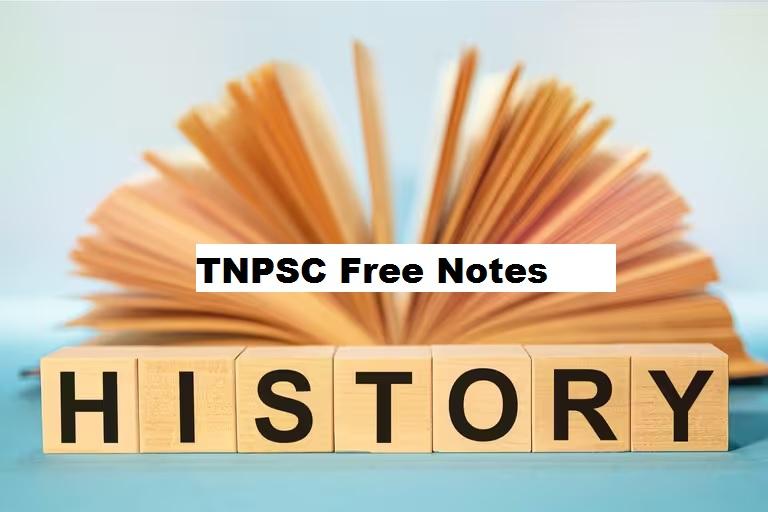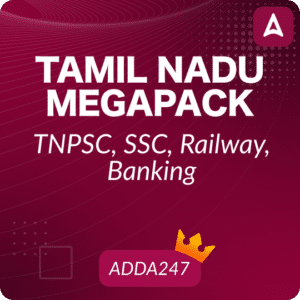இந்தக் கட்டுரையில், TNPSC குரூப் 1, குரூப் 2, குரூப் 2A, குரூப் 4 மாநிலப் போட்டித் தேர்வுகளான TNUSRB, TRB, TET, TNEB போன்றவற்றுக்கான முறைகள் இலவசக் குறிப்புகளைப் பெறுவீர்கள்.தேர்வுக்கு தயாராவோர் இங்குள்ள பாடக்குறிப்புகளை படித்து பயன்பெற வாழ்த்துகிறோம்.
Pandyan Art and Architecture
Education
Pandyas patronised Tamil from Sangam age itself.
To promote literacy, many officials were appointed.
Bhattavirutti and Salabogam were endowments provided for promoting Sanskrit
education.
Brahmins studied the Sanskrit treatises in educational centres like,
Kadigai
Salai
Vidyastanam
From 12 th century, monasteries came up, and they were attached to the temples to
promote education with religious thrust.
A copper inscription says an academy was set up to promote Tamil and to translate
Mahabharatam.
The important Tamil literary texts composed in the reign of the Pandyas were,
Tiruppavai – Andal
Tirvempavai – Manickavasagar
Tiruvasagam – Manickavasagar
Tirukkovai – Manickavasagar
Tirumantiram – Tirumoolar
Tirupallandu – Nammalvar
Mahabharata – Villiputhrar
Naidadham – Adiveerarama Pandya
Seyur Murugan Ula – Srikaviraya
Rathingiri – Srikaviraya
Religion
Pandyas were Jains initially and later adopted Saivism.
The early rock-cut cave temples were the outcrop of a transitional stage in religion and
architecture.
Sadaiyavarman Sundarapandyan was anointed in the Srirangam temple, and to
commemorate it, he donated an idol of Vishnu to the temple.
The inner walls of this temple and three other gopurams were plated with gold.
Pandyas extended patronage to Vedic practices.
Palyagasalai Mudukudumi Peruvaluthi performed many Vedic rituals.
Velvikkudi copper plates as well as inscriptional sources mention the rituals like,
Ashvamedayaga
Hiranyagarbha
Vajapeya yagna conducted by every great Pandya king.
The impartiality of rulers towards both Saivism and Vaishnavism is also made known in
the invocatory portions of the inscriptions.
The great Saiva and Vaishnava saints (Nayanmaras and Alwars) combinedly contributed
to the growth of Tamil literature and spiritual enlightenment.
The period was marked by intense religious conflict.
The Bhakti movement of the time prompted the heterodox scholars for a debate.
Many instances of the defeat of Buddhists and Jains in such debates are mentioned in
Bhakti literature.
The Pandya kings of the period supported and promoted Tamil and Sanskrit.
Art and Architecture
Pandyas built different models of temples.
They are,
Sepulchral temple (E.g. sundarapandisvaram)
Rock-cut cave temples
Structural temples
The early Pandya temples are modest and simple.
Medieval Pandyas and later Pandyas did not build any new temples but maintained the
existing temples, enlarging them with the addition of gopuras, mandapas and Prakaras.
The special features of the Pandya temple architecture are,
Gopuras
Prakaras
Vimanas
Garbhagrahas
Gateways
The monolithic mega-sized ornamented pillars are the unique feature of the medieval
Pandya style.
Notable examples of Pandya architecture,
Madurai
Chidambaram
Kumbakonam
Thiruvannamalai
Srirangam
Pandyas specially patronised the historic Meenakshi temple at Madurai and kept
expanding its premises by adding gopuras and mandapas.
According to Al Basham, the following are architectural zenith in the Pandya age,
Meenakshi temple, Madurai
Aranganathar temple, Srirangam
Sepulchral temple
Sundarapandisvaram is the best example of a sepulchral temple.
Structural temples
It consists of,
Garbagraha
Arthamandapa
Mahamandapa.
Public meetings, social gatherings, religious keerthans, recitals, and Katha-Nataka were
held in the sabha mandapas of temples.
Temples were built in a planned manner, E.g.,
Ambasamuthiram
Thiruppathur
Mannarkudi
Madurai
Alagarkoil
Srivilliputhur
Chinnamanur
Kovilpatti
Big gopurams and temple mandapams along with gopurams were built in,
Chidambaram
Srirangam
Kulasekara Pandiyan built every temple with
Arthamandapa
Manimandapa
Sannithi
Rock cut temples
More than 50 rock-cut temples were excavated at several places like,
Thirupparankundram
Karaikudi
Kalugumalai
Malaiyadikuruchi
Tiruchirapalli
Kunnakudi
Anaimalai
Sithannavasal
Pillayarpatti
Tirumayam
Tiruchendur
Kanyakumari
Prominent cave temples are found at,
Kalugumalai
Trichy
Pillayarpatti
Tirumayam
Kundrakkudi
Tiruchendur
Kanyakumari
Sittannavasal
A 9 th century inscription from the Sittannavasal cave temple informs that the cave was
authored by Ilam Kautamar.
Another inscription of the same period tells us that Sri Maran Srivallaban renovated this
temple.
Sculptures
Pandiyas followed the cave temple tradition of Pallavas
The following,
Somaskandar
Durgai
Ganapathy
Narasimhar
Natarajar are good specimens of Pandya sculptures with messages and values.
The best specimens of sculptures are,
Siva
Vishnu
Kotravai
Ganesa
Subramanya
Surya
Brahma
Many sculptures are found at,
Kalugumalai
Thiruparankundram
Thirumalaipuram
Narttamalai
Kunnakudi
Kazhugumalai sculptures are known as Southern Ellora.
Some Pandya sculptures are as beautiful as Pallava and Chola sculptures. E.g.,
Vishnu sculpture – Kunnakudi
Natarajar sculpture – Thirukollakudi
Paintings
The mural paintings of Srimaran Srivallabha Pandya are seen in the Sithannavasal cave
temples.
The paintings of Lotus, bathing elephants, and playing fish are noteworthy.
The fresco paintings on the walls, ceilings, and pillars are great works of art.
These paintings portray the figures of dancing girls, the king, and the queen.
Oil paintings were also created.
**************************************************************************
| Adda247 TamilNadu Home page | Click here |
| Official Website=Adda247 | Click here |




